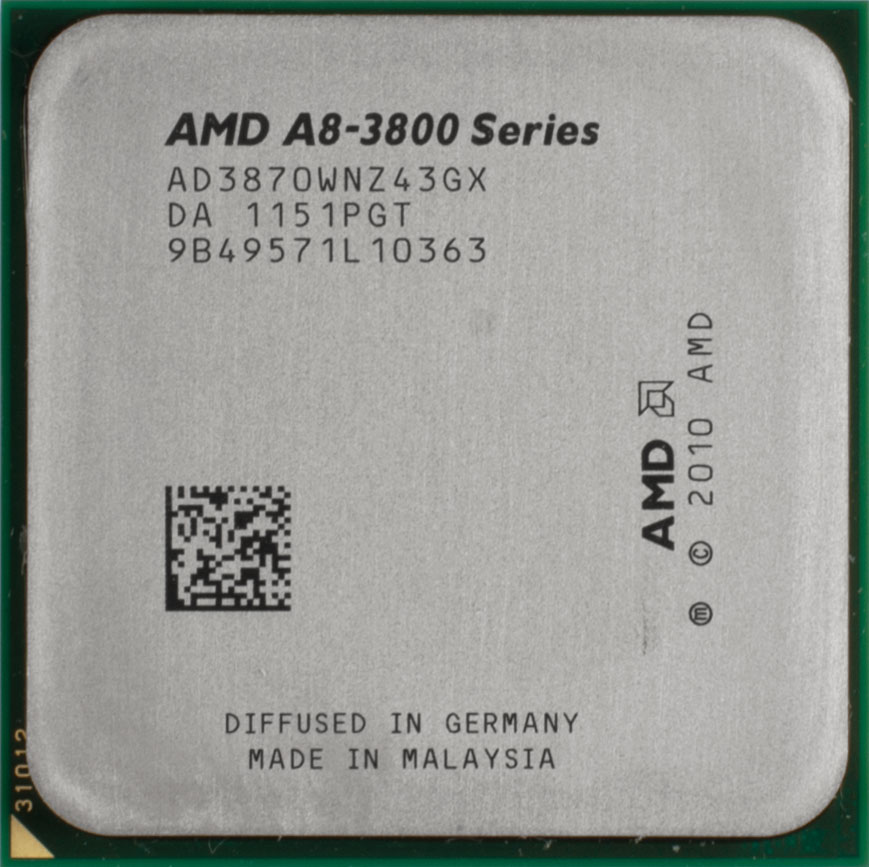Better With Time? The A8-3870 And Pentium G630, One Year Later
AMD's desktop APUs, which combine x86 cores and graphics resources, emerged more than a year ago. We take a Llano-based A8-3870 and compare its performance from 2011 to what you get today using new drivers, application versions, and OpenCL acceleration.
Components: AMD A8-3870 And Intel Pentium G630
It’s almost impossible to build two comparison systems that all readers will agree match up. Some folks prefer comparing an equal number of cores, others favor matching clock rates, and some like to pit specific features against each other. The vendors themselves typically focus on market segments. For our purposes, we put AMD's A8-3870 (four cores at 3.0 GHz) next to Intel's Pentium G630 (two cores at 2.7 GHz), yielding systems priced similarly.
Because we've already run a ton of numbers in previous stories, we know that AMD's APU is faster in applications able to exploit its four cores and in games running on its integrated graphics engine. Intel's architecture is far more efficient, though, so in tests that tax one or two cores, the Pentium enjoys a sizable advantage at much lower power.
Had we picked a Core i3 or faster Pentium G870 processor, the Intel machine would have been more expensive without much effect on the overall performance picture (since both are still dual-core parts). AMD would still likely win in well-threaded benchmarks, while Intel would extend its lead in apps like iTunes, in addition to games driven by discrete graphics, where AMD tends to be platform-limits. You'd need to spend even more for a Core i5 to beat the A8 in a more resounding way.
AMD’s A8-3870 includes four cores operating at 3 GHz, each with 1 MB of L2 cache, and a Radeon HD 6550D graphics core code-named Sumo. It requires a Socket FM1-equipped motherboard and dissipates up to 100 W of power.
We used MSI’s A75MA-G55 mini-ITX motherboard as the foundation for our system. Its four DIMM slots support up to 32 GB of memory. Two PCI Express x16 slots, one PCIe x1 slot, and one PCI slot handle add-in connectivity, while HDMI, DVI, and VGA ports facilitate flexible display options. USB 3.0 is available for high-speed peripherals.
Intel’s Pentium G630 centers on the company's Sandy Bridge architecture, manufactured at 32 nm. It features two 2.7 GHz cores with 3 MB of shared L3 cache (AMD's A8 doesn't include any L3). Per core, it's a lot faster than the APU, but its on-board graphics engine is also completely outclassed by the Radeon.
The Intel board is a Gigabyte H67MA-UD2H. It has a similar feature set as the MSI board we're using to host the AMD processor, but it adds DisplayPort and an eight-phase voltage regulator.
Get Tom's Hardware's best news and in-depth reviews, straight to your inbox.
Current page: Components: AMD A8-3870 And Intel Pentium G630
Prev Page Test Setup And Benchmarks Next Page Benchmark Results: Audio And Video


